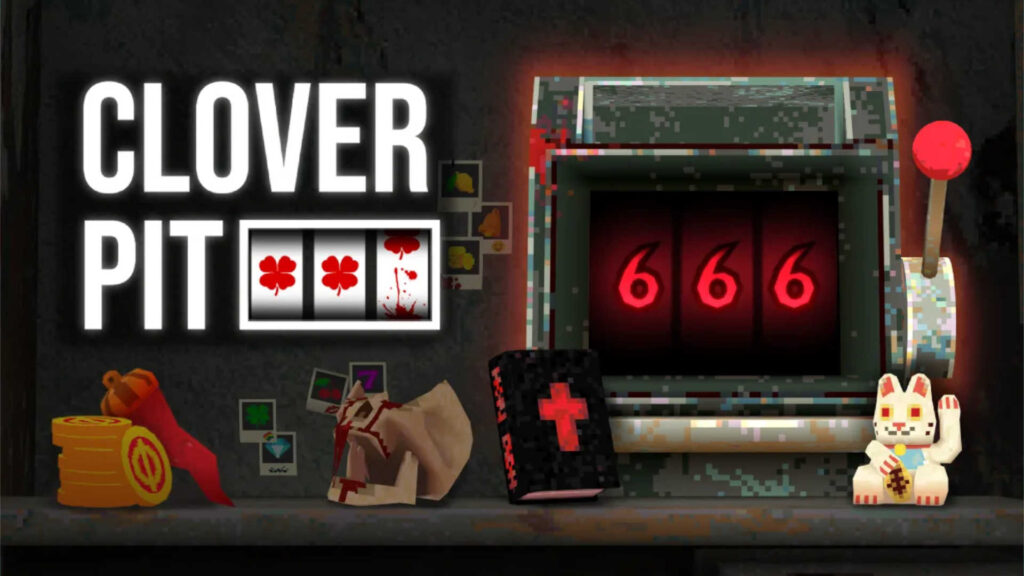Images courtesy of Legend Story Studios/Wizards of the Coast
Greetings and salutations, my fabulous #FAB folks! Welcome back to Card Gamer and my little corner of the internet. Today I’m waxing nostalgic a bit and thinking back to my time playing Magic the Gathering.
I played MTG for the better part of two decades before I found Flesh and Blood. I took a break for a few years when I got married, and by the time I came back, it wasn’t the same game.
The way Hasbro was/still is treating the game like a cash cow and how the brass at WOTC just wagged their tails like good hounds on a leash got tiring.
Commander was… fine, but it didn’t scratch the competitive itch for me. (Two of my former commanders below.)
Table of Contents
ToggleWhat’s This Got to Do with Flesh and Blood Exactly?
When I came back to Magic I realized quickly that something was missing. It felt like the competitive soul was gone and casual play was being forced down my throat. I tried going to some local weekly events, but the air was different. It just wasn’t the same as going to Friday Night Magic back in the early 2000s and 2010s.
Grinding FNMs, dreaming of being on a Pro Player card insert, road trips with my buddies to play in qualifier events, and the good-natured ribbing when we all inevitably scrubbed out. Those were the days.
Those vibes… that energy… that passion for the competition… that’s what I really missed and why I picked the game back up. I found that feeling again when I found Flesh and Blood.
Today I want to share with you all a few comparisons between what should be familiar Modern archetypes/play styles and something similar to them in FAB. These are wildly different games mechanically, so obviously there’s no one-to-one comparisons deck wise. However, decks and play styles evoke certain feelings when you really enjoy playing them, and those styles do translate from one game to another.
If you love – or loved – Modern MTG and miss those old school vibes, you’ll love the comparisons I make and, eventually, your local Armory scene too.
Let’s get started!
If You Love(d) Rakdos Scam… Try Mario!
For a while, Rakdos Scam was the deck in Modern. You’d play a land, evoke a Grief, bring it back with a one-mana undying effect, and strip two cards from your opponent’s hand before they even took a turn. It was fast, brutal, and made every game feel lopsided from the start.
Then the deck got whacked with a ban hammer a few times. With both Grief and Fury gone, Scam has been dead in the water for a while.
But if you loved the feeling of early disruption, aggressive tempo, and punching holes in your opponent’s plan, Arakni, Marionette brings that vibe to Flesh and Blood.
“Mario,” as this version of the hero has come to be known, is an aggressive Assassin who hits hard and plays fast. They force blocks, attack hands, and punish poor decisions with attack reactions and dagger pokes that shift momentum.
They don’t slow down to play fair. They’re here to pressure, disrupt, and cut opponents off before they ever stabilize.
Scam players who liked making their opponents stumble out of the gate will feel right at home with these aggressive lines that force bad choices while wearing Arakni’s mask.
If You Love Burn… Try Kano!
Burn is the deck for players who want to get in, deal twenty, and get out. You’re not trying to win with board control or value engines. You’re pointing spells at the dome and racing to the finish line with every card in your hand.
This was one of my favorite decks back when I played Magic, and I still count to 20 in chunks of three. Burn asks the age old question, “Can you kill me before I kill you?”
Kano is a hero who asks the same question that Burn does, but with a more visceral fireball to the face. He can be the most uninteractive deck in the game and definitely goldfishes harder than almost any other hero.
He’s a Wizard who plays from the top of his deck, launching arcane damage that most heroes block poorly or not at all. And while Kano used to be known for long setup turns and pitch-stacked combo kills, his current builds are closer to an arcane missile silo.
He’s looking to end the game early by pushing huge, nearly unblockable damage at the first opportunity. If your opponent isn’t careful, they’ll explode on their own turn before they even see it coming.
Kano rewards fast thinking, bold plays, and deck experience the same way Burn does. The good news is, he’s also one of the few heroes you can seriously practice with by goldfishing. Drawing and repping hands, counting resources, and testing kill lines on your own will take you far. (Just like Burn.)
Burn players will likely feel right at home lighting people up with Kano in Flesh and Blood.
Honorable Mention – Red Deck Wins in FAB
There’s a lot of MTG vets in FAB, so there’s inevitable comparisons between the games. This is an archetype I’ve seen mentioned quite a few times over the last few years. RDW and Burn share a lot of the same DNA, but are definitely different decks.
Red Deck Wins leans more on low-to-the-ground, hasty creatures and combat than direct damage spells. It’s still aggressive, still efficient, and still trying to end the game early, but it does it more by turning dudes sideways. The closest comparison in FAB is the Draconic Ninja, Cindra, Dracai of Retribution.
Cindra is built from the same fire-stoked mold as old school Red Deck Wins. She’s a hyper-aggressive Ninja with fire-based attacks that hit hard, fast, and often. She might not launch arcane missiles from the top of her deck, but she’s more than happy to burn you down through sheer Momentum.
If you liked keeping the pressure on with cheap creatures and combat tricks in Magic, Cindra is a great entry point into Flesh and Blood.
If You Love Izzet Murktide… Try Ira!
Izzet Murktide has always been a deck that rewards clean lines and punishes misplays. Every spell is efficient, every swing is calculated. You’re not trying to overwhelm your opponent with raw power. You’re trying to control the pace, dictate the exchanges, and win through tempo and value over time.
Ira, Scarlet Revenger brings that same mindset to Flesh and Blood.
She doesn’t explode out of the gate or flood the board with summons. Instead, she applies pressure through efficiency and discipline. Most hands in Flesh and Blood are expected to generate around twelve points of value, but Ira consistently pushes past that benchmark.
Her second attack each turn hits harder, and her on hit effects punish bad blocks or greedy hands.
Ira is the queen of value. She turns small advantages into winning positions over time, and she rewards players who can sequence cleanly and adapt mid-game. If you loved sculpting tempo turns and picking your spots with Murktide, Ira will feel like home from the very first matchup.
If You Love Amulet Titan… Try Dash I/O!
Amulet Titan is a deck for players who love complex lines and explosive turns. You’re sequencing lands, managing tight resources, and setting up a huge payoff that can win the game out of nowhere. It’s not about attacking early; it’s about assembling the pieces and pulling the trigger when your opponent least expects it.
It might sound weird to some people, but that same skillset carries over rather well to Dash I/O in Flesh and Blood.
Dash is a Mechanologist with one goal: keep the pressure on until the roof blows off. She wants to sneak items into play at opportune moments while weaving them around her attacks and maximizing every turn’s output. All gas, no brakes, while the gas pedal melts to the floorboard – but she’s surprisingly hard to master.
Why does this compare to Titan? Dash I/O is a more aggressive deck than Titan, sure. FAB is a different game with different mechanics. Where the Amulet Titan skills translate is in how both decks reward players who understand timing, sequencing, and efficient use of resource windows.
If you liked mapping out your combo turns with Titan and watching the math line up in your favor, Dash I/O delivers that same explosive payoff in a faster, punchier package.
If You Love UW Control… Try Jarl Vetreidi
Azorius Control is a classic. You’re not racing. Not trying to combo off. You’re sitting back behind counterspells and board wipes, waiting for the perfect moment to slam the door; the win condition is almost an afterthought. What matters is inevitability and denying your opponent every meaningful decision until they run out of time, cards, or patience.
A well built Jarl Vetreidi plays from the same cold, calculated playbook.
He’s a Guardian who can be built several ways. That being said, there’s a version of his deck that wants to block everything, deny tempo, and chip in only when it matters. While other heroes focus on tempo or explosive turns, Jarl has taken up Oldhim, Grandfather of Eternity’s mantle and is here to outlast.
He taxes your opponent’s resources, punishes inefficiency, and slowly pushes them to the edge of fatigue. You’re not trying to win fast, you’re trying to make sure your opponent never feels like they got to play their game at all.
UW Control players who loved the feeling of locking down the board, managing every resource, and winning with inevitability will feel right at home with an icy Jarl’s approach to Classic Constructed. After all, a game is more fun when it’s not, right?
If you’re the kind of person who lives for the long game, Jarl is your guy.
Final Thoughts
Like I said earlier, Magic the Gathering and Flesh and Blood don’t play the same, but certain mindsets carry over.
The strategies. The turn planning. The feeling of pulling off something sick because you mapped it out three turns ago. If you know how you like to play Magic, you already have a head start in FAB.
You don’t have to reinvent yourself to try a new game. Lean into what you already enjoy. Aggro, control, combo – there are different names for it here, but the vibes are similar enough to recognize.
The mechanics may be different, but the goals, and more importantly, the feelings are the same.
If you’ve been thinking about giving Flesh and Blood a shot, or if the Modern meta is starting to feel a little tired, here’s my advice: reach out to your local FAB community and ask to borrow a deck for an Armory. If your locals are anything like mine, someone will likely have one handy.
If you do, you might just find that same spark you used to chase back in the golden days of Magic.
Want to keep the conversation going? You can find me on Twitter, Blue Sky, or Discord as Dracohominis87. Or, check out the Siblings in Cardboard podcast, where I hang out every week with a few of the friends I’ve made in FAB. We’re passionate about the game, a little chaotic, and usually a few cards short of a full deck – but we have a damn good time.




